By Chris Kittleson, Certified Playground Safety Inspector (CPSI), Director of Loss Control Technical Services – Public Risk Underwriters of Florida, Inc.

The playground is a place where children run, laugh, take risks and explore possibilities. It is a place where imagination and spontaneity rule the moment and where play claims a major role in childhood development. However, playgrounds can also be a source of injury when improperly designed or maintained.
As Risk Managers and Safety Professionals we all agree that playground injuries are preventable as well as a priority in order to protect our children from injury and/or death. According to the Center for Disease Control and Prevention (CDC), each year Hospital Emergency Rooms treat more than ages 14 and younger for playground related injuries that include traumatic brain injury (TBI), including concussions, as well as fractures, contusions and abrasions.
In addition, in a recent study the Consumer Product Safety Commission (CPSC) investigated 40 deaths associated with playground equipment. They found that the average age of children who died was six years old and that 27 (68 %) died from strangulation and six (15 %) died from falls to the playground surface. Strangulations involve head/neck entrapment, such as wearing bicycle helmets on a playground which increases the size of the child’s head resulting in entrapment. Also, loose clothing and clothing with drawstrings that could catch on play equipment and become entangled can cause strangulation. In addition, cords such as jump ropes, dog leashes, or rope swing supports also have the potential for strangulation if left attached or near playground equipment.
There are many playground hazards that relate to equipment, the environment and the lack of supervision. The National Playground Safety Institute (NPSI) has identified these most common playground hazards which they refer to as the “Dirty Dozen” as follows:
- Improper Protective Surfacing
- Protrusion & Entanglement Hazards
- Insufficient Equipment Spacing
- Lack of Supervision
- Lack of Maintenance
- Platforms with No Guardrails
- Inadequate Use Zone
- Entrapment in Openings
- Trip Hazards
- Age-Inappropriate Activities
- Crush, Shearing and Share Edge Hazards
- Equipment Not Recommended for Public Playgrounds
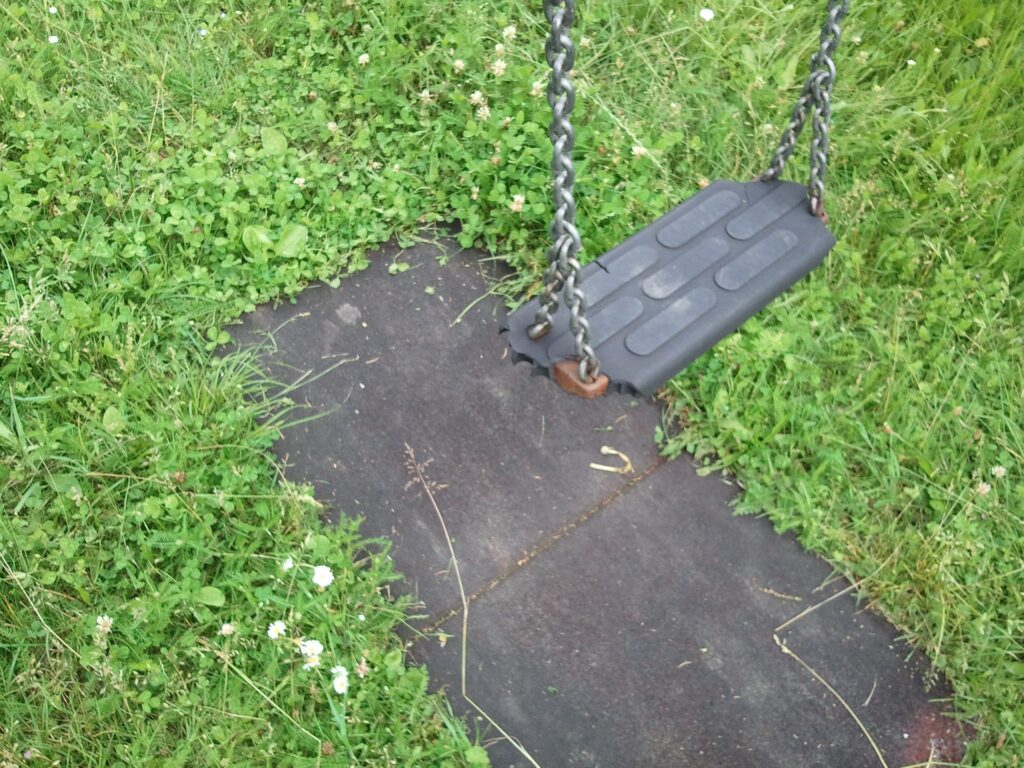
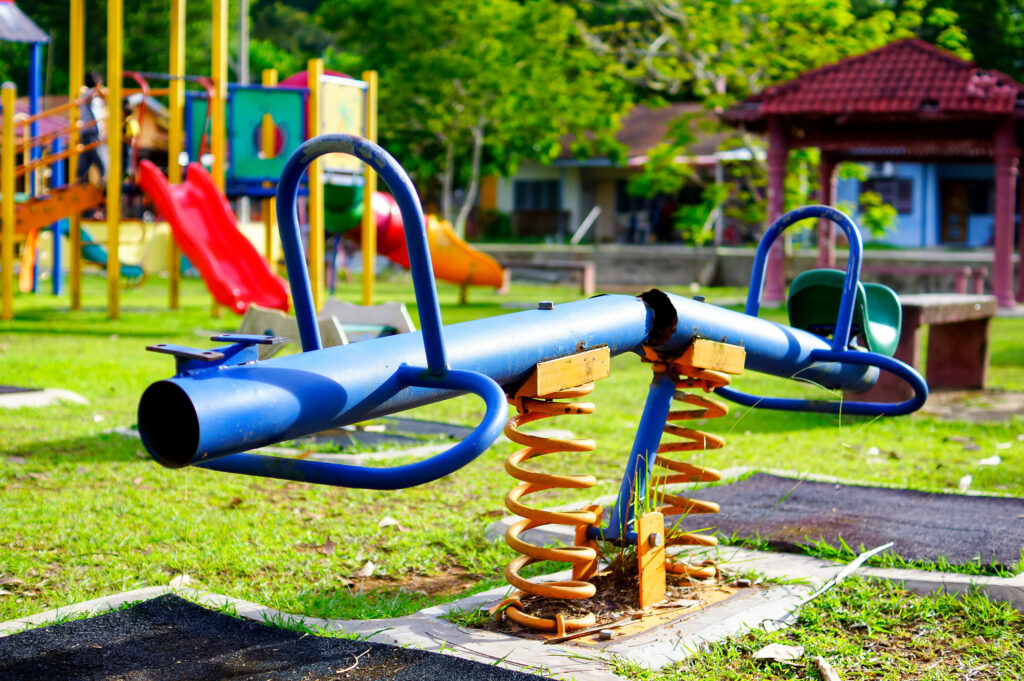
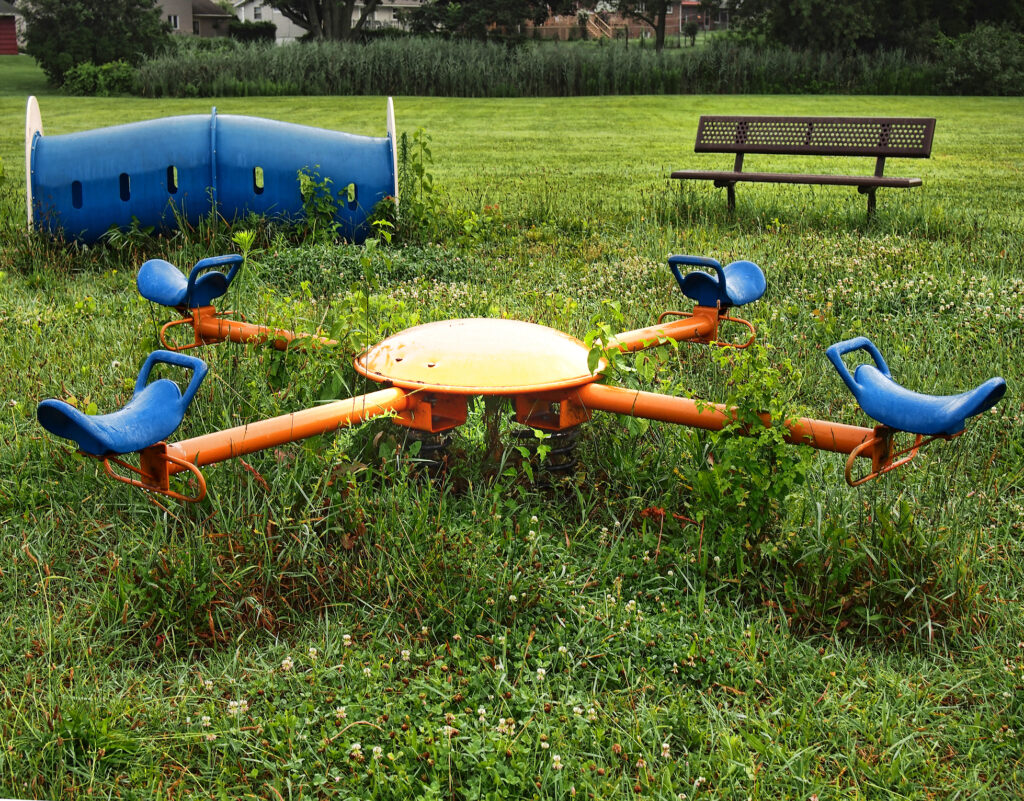
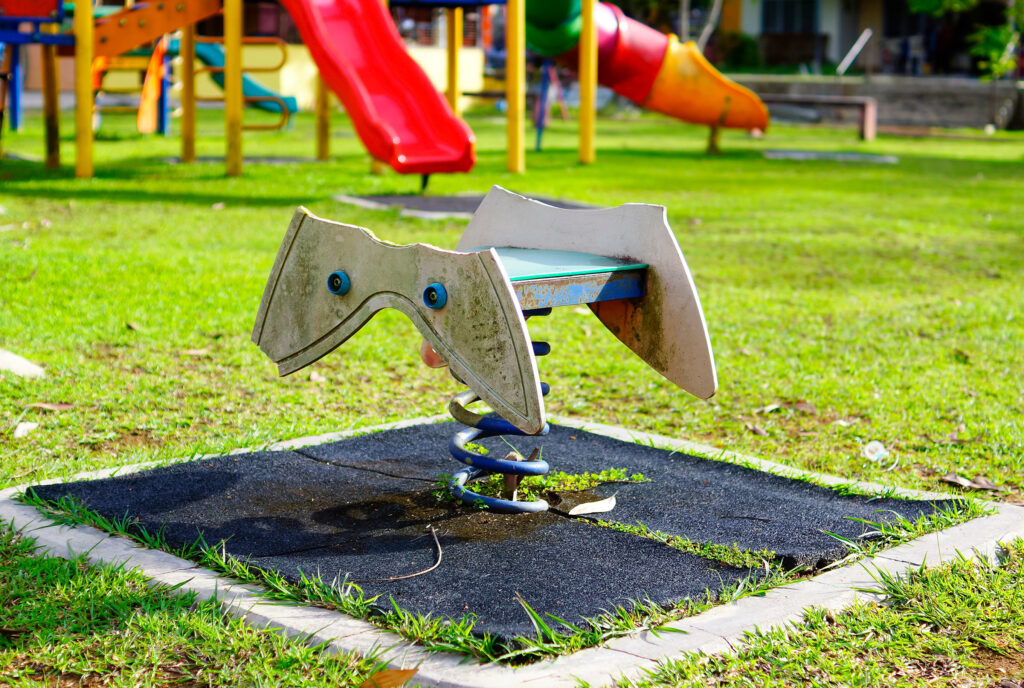
An understanding of playground safety requires a review and understanding of some basic concepts which include the following:
Age Appropriateness
Playgrounds should be appropriate for the age-related abilities of children. More specifically, toddlers, preschool and school-age children differ in their physical size, ability, intellect and social skills. Therefore age-appropriate playground equipment/design should accommodate these differences as it relates to type, scale and layout of playground equipment. Age groups for the purposes of playground safety are defined as “toddlers”, which are children ages 6 months through 2 years of age, “preschool age”, which are children 2-5 years of age and “school age”, which are children 5-12 years of age.
Inappropriate Playground Equipment
Some playground equipment is not recommended for use on public playgrounds and would include the following:
- Swinging Gates
- Climbing ropes that are not secured on both ends
- Animal-figure swings
- Multiple occupancy swings
- Rope Swings
- Trampolines
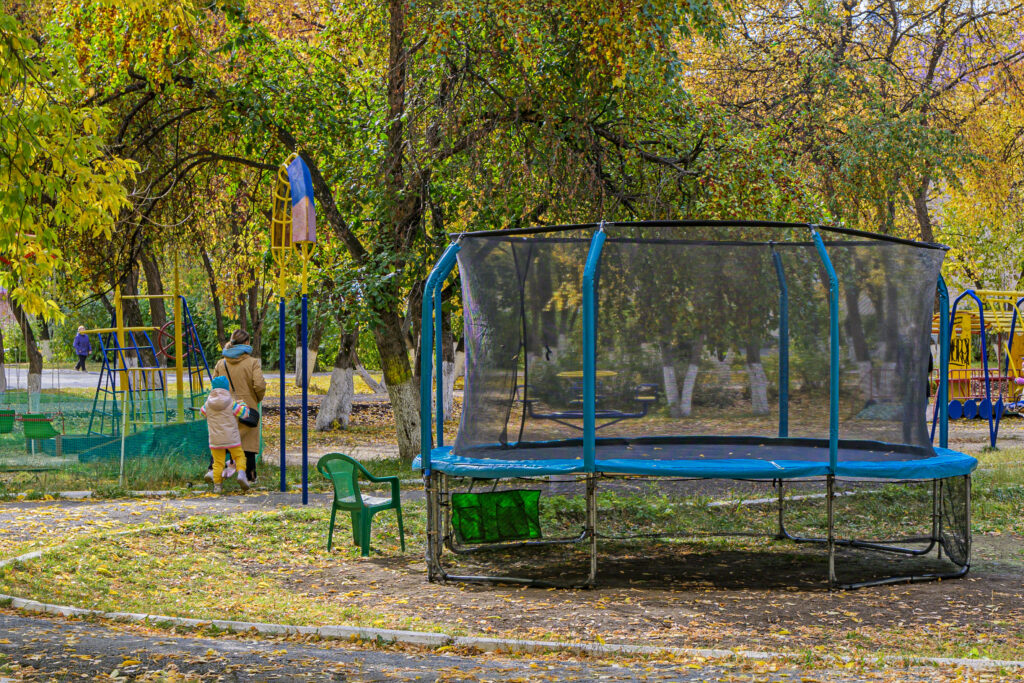
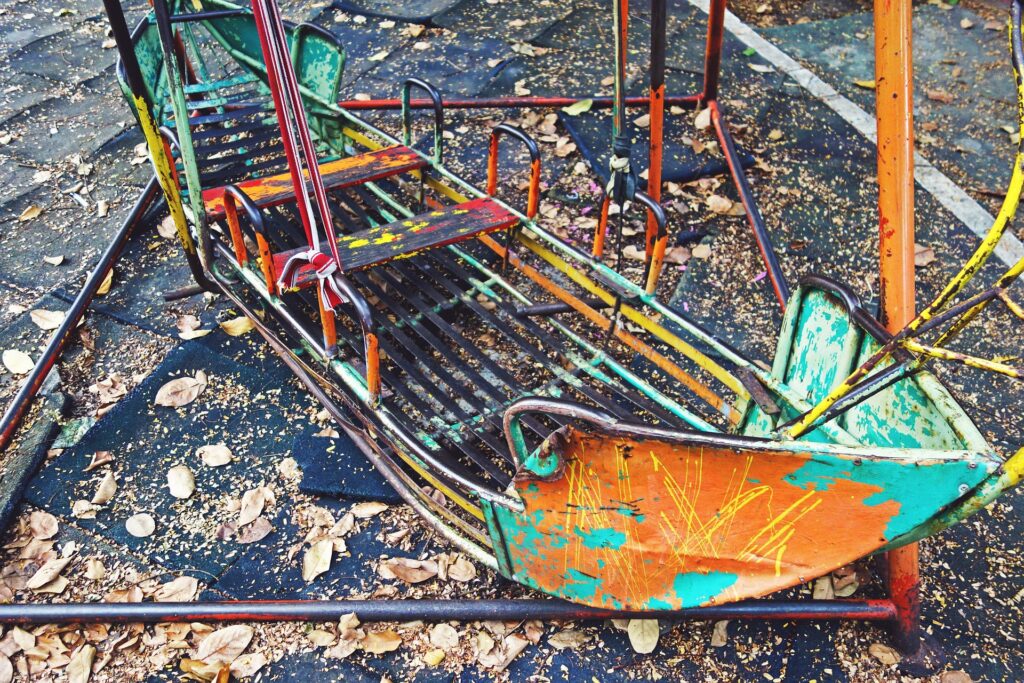
Surfacing
The surfacing under and around playground equipment can be a major factor in determining the severity of an injury caused by a fall. A fall onto a shock-absorbing surface is less likely to cause a serious injury than a fall onto a hard surface. Because head-impact injuries from a fall have the potential for being life-threatening, the more shock absorbing material a surface has, the greater the likelihood of reducing a severe injury. Manufacturers and installers of playground protective surfacing should provide the critical height rating of their materials to assist in determining the required depth of protective material around each piece of playground equipment. Examples of acceptable/unacceptable surfacing are as follows:
Acceptable Surfaces
- Engineered Wood Fiber
- Wood Chips
- Sand / Pea Gravel
- Synthetic / Rubber Tires
- Rubbers Mats
- Unitary Surface (poured rubber material)


Unacceptable Surfaces
- Concrete
- Blacktop
- Packed Earth
- Grass


Adult Supervision
Young children are constantly challenging their own abilities without recognizing potential hazards that could lead to an injury. Supervision of children in playgrounds ensures age appropriate use of play equipment and helps in preventing injuries. If an injury does occur, the adult can ensure first aid/medical attention is provided immediately.
Proper Maintenance
To provide a safe playground, a systematic preventative maintenance schedule must be developed, implemented and enforced to include the following:
- There should be no missing, broken or worn-out components
- All hardware should be secure
- The wood, metal or plastic should show no signs of fatigue or deterioration
- All parts should be stable with no apparent signs of loosening
- Surfacing materials must be maintained
- Check for signs of vandalism
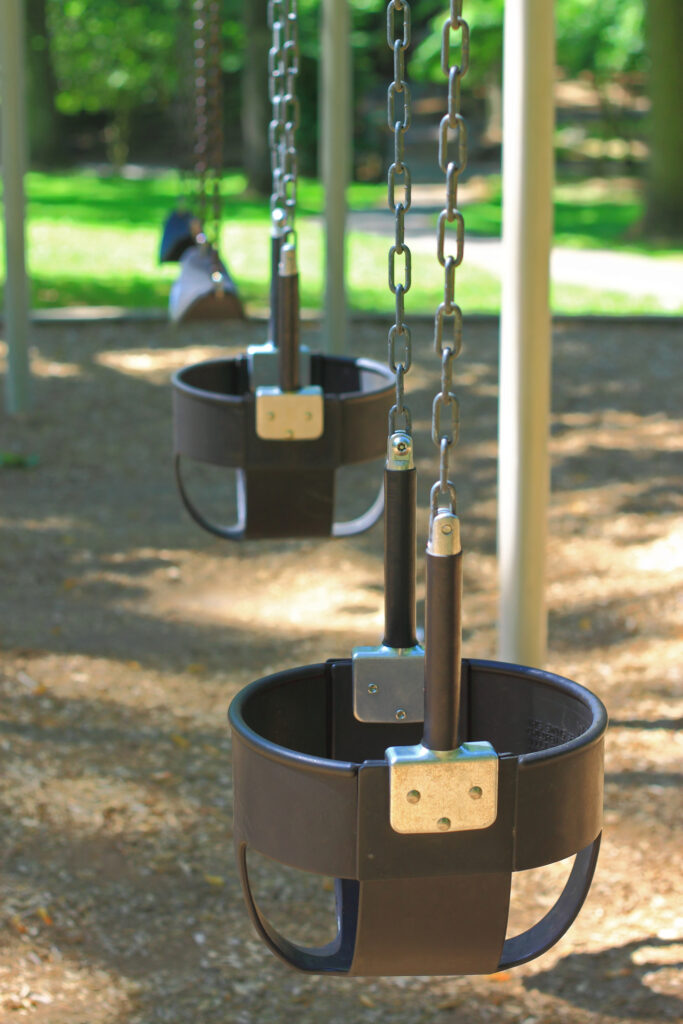
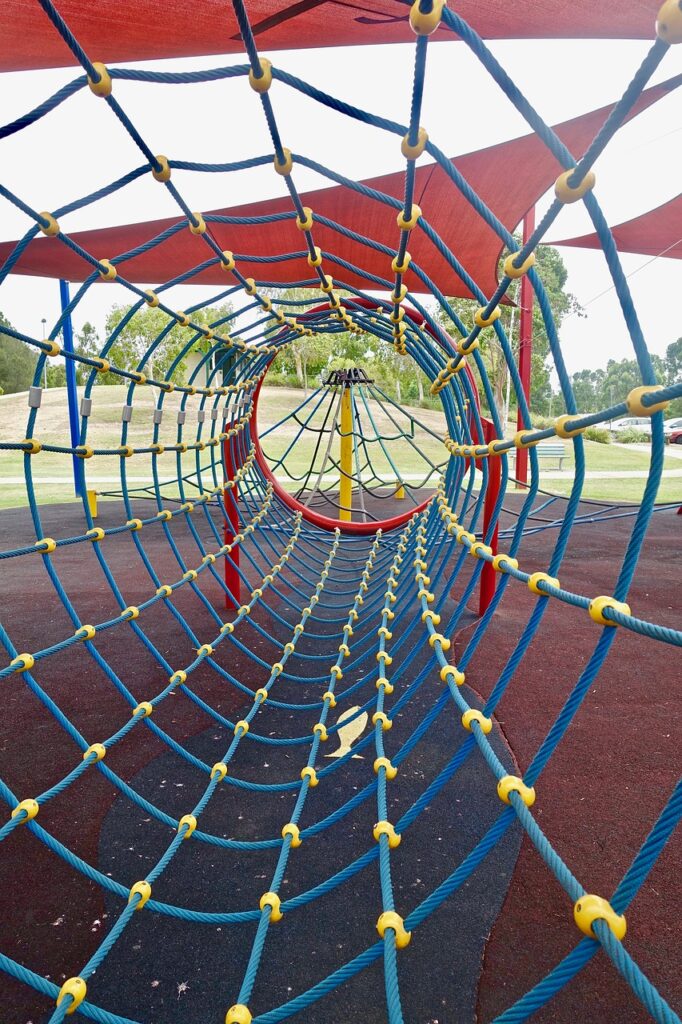
Regular Inspection
Providing regular documented playground inspections helps in keeping the playground safe by identifying unsafe conditions caused by wear and tear, vandalism, breakage, storm damage, litter as well as other environmental concerns, i.e. flooding and stinging insects. In addition, playground inspections are essential in order to maintain the standard of care as a means to reduce the potential for liability.
Playground inspections should be completed by trained staff, tailored to type of equipment and surfacing, designed to document both problem and corrective action and documented with easy-to-use checklist/forms based on Manufacturer’s recommendations as well as the Owner’s policies and procedures.
Inspection protocol can be characterized as either Low Frequency, which is routine maintenance, such as replacing worn “S” hooks on swings or High Frequency, which is preventative maintenance, such as monitoring the depth of wood mulch.

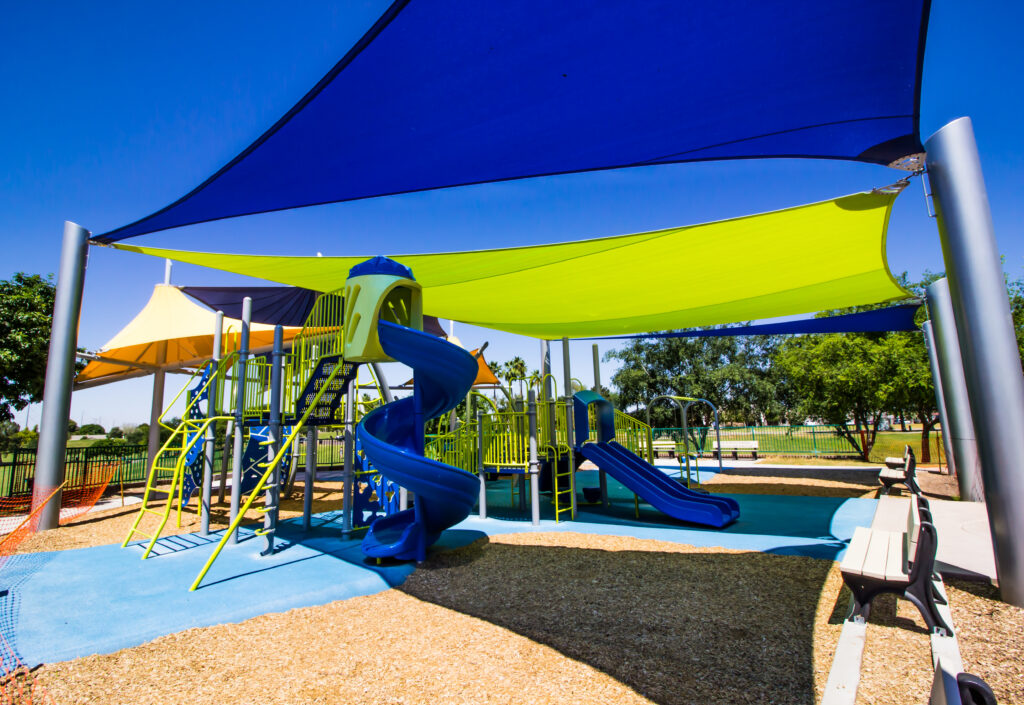
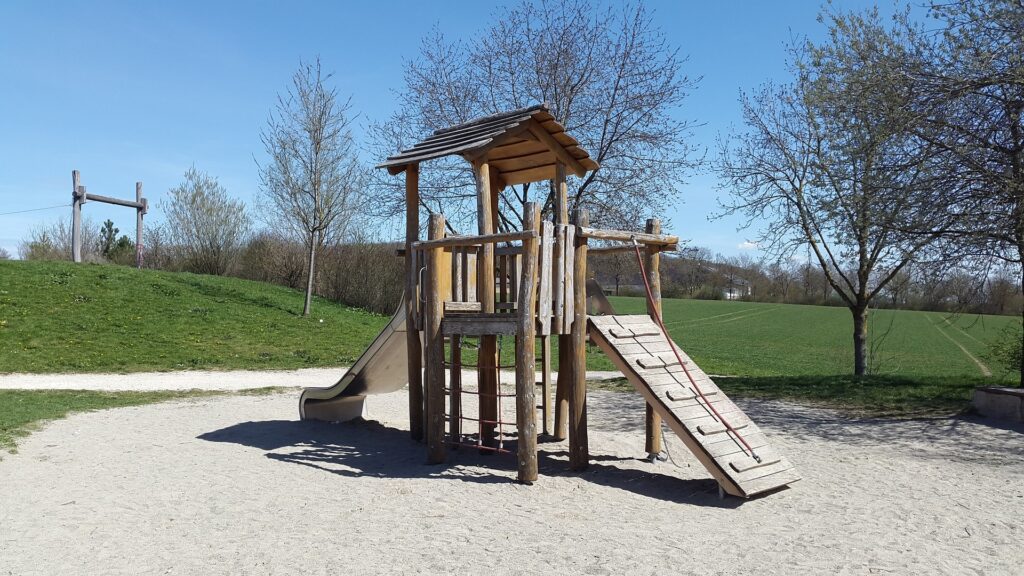
Environmental Hazards
Protecting the playground area from sun provides a dual benefit. Shading the playground from the sun provides a cooler play area, reducing the potential for heat related illness as well as prevents playground equipment from reaching high temperatures which could result in burns to the skin. Shading can be provided either through the use of the natural landscaping or shades designed by Manufacturers to assist in mitigating these sun related hazards.
Older playgrounds may be painted with lead based paints and should be identified and a strategy to control lead exposure be developed. Additional information can be obtained from the CPSC publication entitled, Staff Recommendations for Identifying and Controlling Lead Paint on Public Playground Equipment.
A significant amount of older playground equipment was constructed with pressure treated wood using chemicals to reduce damage from insects/fungi. One of the predominate chemicals used was Chromated Copper Arsenate (CCA), which contains arsenic. Additional information can be obtained from the CPSC publication entitled, Chromated Copper Arsenate (CCA) – Treated
Wood Used in Playground Equipment. Also, CCA wood should not be used as
playground mulch.
Accessibility Requirements
The Americans with Disabilities Act (ADA) specifically states that “each service, program or activity conducted by a public entity, when viewed in its entirety, be readily accessible to and usable by individuals with disabilities.” The Architectural and Transportation Barriers Compliance Board otherwise known as the “Access Board” developed play area guidelines that are a supplement to the Americans with Disabilities Act Accessibility Guidelines (ADAAG).
Based on these guidelines, Operators/Owners are obligated to provide individual with disabilities an equal opportunity to enjoy their respective play areas. More specifically, ground surfaces along accessible routes, clear floor or ground and maneuvering spaces must comply with the American Society of Testing and Materials (ASTM) F1951-14 Standard Specification for Determination of Accessibility to Surface Systems under and around Playground Equipment. Further information and copies of the guidelines can be found at www.access-board.gov.
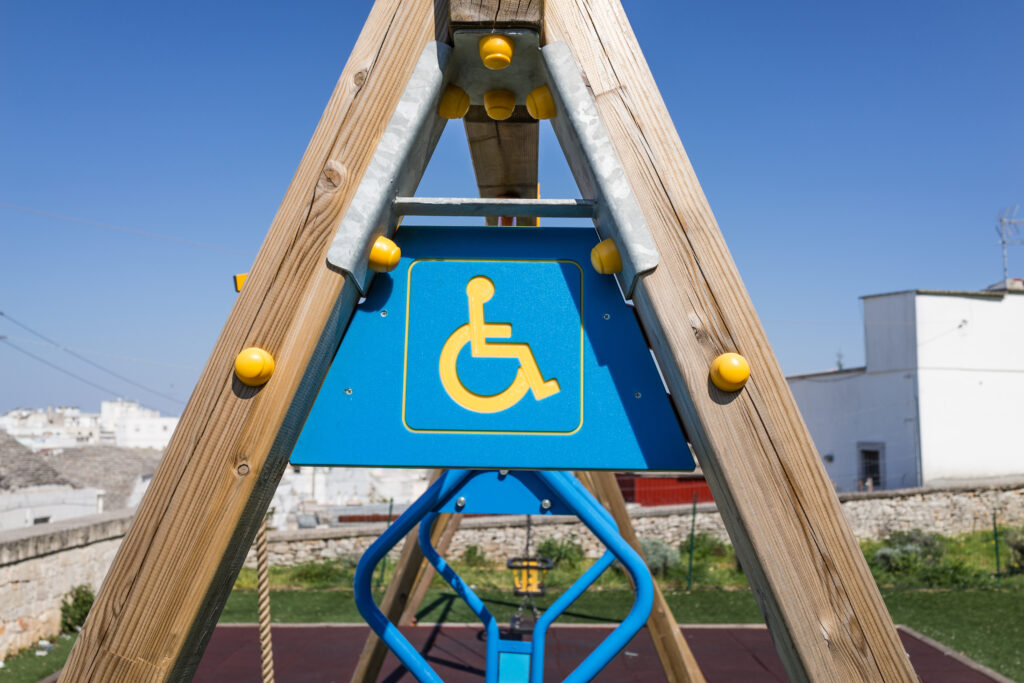
Public Playground Risk Management Program
Municipalities should consider formalizing playground safety through the development, implementation and enforcement of a comprehensive “Public Playground Risk Management Program” to assist in controlling exposures associated with public playgrounds. The program should contain the following elements:
- Playground Safety Policy
- Designation of a Playground Safety Coordinator
- Documentation
- Safety Audit
- Inspections and Maintenance
Playground Safety Resources
The National Recreation and Park Association (NRPA) sponsor a program through the National Playground Safety Institute (NPSI) that offers the Certified Playground Safety Inspector (CPSI) course. This is a three year certification that focuses on the CPSC and ASTM guidelines and standards. The CPSC, ADA and ASTM represent the main reference resources for anyone seeking information or guidance on playgrounds or playground systems. Some of the primary guidelines and standards that are most relevant would be as follows:
Centers for Disease Control and Prevention – Home and Recreational Safety, Playground Safety: Fact Sheet.
National Recreation and Park Association – The Dirty Dozen: Are they hiding in your child’s playground?
Consumer Product Safety Commission – Public Playground Safety Handbook.
Consumer Product Safety Commission – Chromated Copper Arsenate (CCA) – Treated Wood Used in Playground Equipment.
Consumer Product Safety Commission – Staff Recommendations for Identifying and Controlling Lead Paint on Public Playground Equipment.
ASTM F1487-17: Standard Consumer Safety Performance Specification for Playground Equipment for Public Use.
ASTM F2223-15: Standard Guide for ASTM Standards on Playground Surfacing.
ASTM F1292-17: Standard Specification for Impact Attenuation of Surfacing Materials Within the Use Zone of Playground Equipment.
ASTM F1951-99: Standard Specification for Determination of Accessibility to Surface Systems under and around Playground Equipment.
As a Member of Preferred, your Loss Control Consultant is available to lend assistance by providing sample playground safety inspection checklists as well as assisting with formalizing your playground safety programs, policies and procedures.
Christopher H. Kittleson is the Director of Loss Control Technical Services for Public Risk UW of Florida and provides Loss Control services for public entities in the southeastern Florida region. With over 24 years of Safety & Health consulting experience in both the public/private sector, Chris has developed expertise in the areas of Safety Program Development, Return to Work Programs, Regulatory Compliance, Accident Investigation and Safety Training. Chris graduated Cum Laude from St. Cloud State University, St. Cloud, MN with a Bachelors of Science in Engineering Technology, has earned his Associate in Risk Management (ARM) is a National Safety Council Certified Defensive Driving Course Instructor, Certified Playground Safety Inspector (CPSI), as well as a Professional Member of the American Society of Safety Professionals (ASSP), Past President of the South Florida Chapter of ASSP and was awarded the 2013 Safety Professional of the Year Award by the South Florida Chapter of ASSP.

